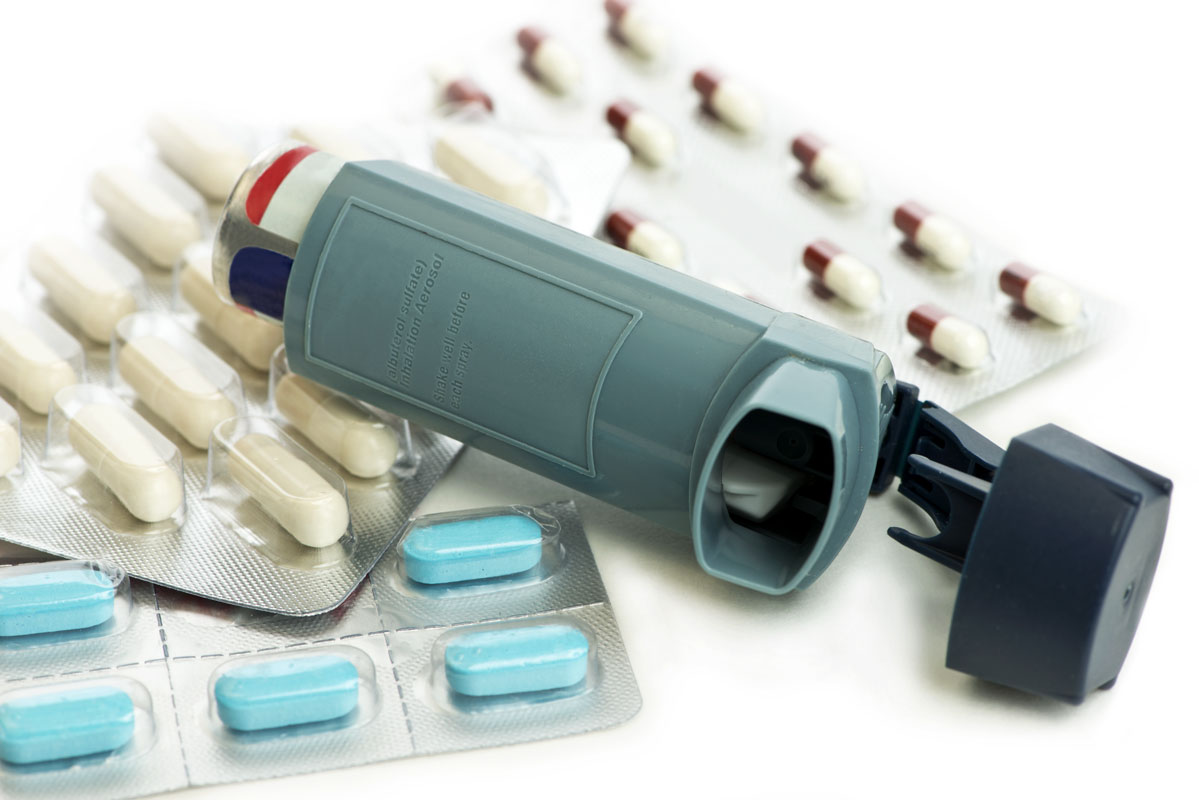Asthma is a disease where the lungs and airways become inflamed and restricted. There is a strong genetic component to asthma. That is to say, one may carry genes predisposing themselves to developing it. Currently, twenty-three million people have asthma and seven million of them are kids. Although, it can be caused by a long term allergic response to environmental toxins, childhood respiratory infections, or being too sanitary (NIH, 2018).
When a child is not exposed to certain bacteria or infections, they do not have the ability to build a tolerance to the microbes. This leads to a less effective immune system for fighting bacteria and infections (Barnes, 2011).
Symptoms
People with asthma often have a swollen, sensitive airway that causes wheezing, tigtness in the chest, coughing and breathlessness. These symptoms are normally treated with bronchiodilators and corticosteroids. Therefore, they expand the airway allowing a greater flow of oxygen and reducing inflammation. Unfortunately, there is no cure, but there are treatments. Although, we are currently looking at vaccines that will reverse the disease in children (CDC, 2018).
Treatment
An emerging treatment for asthma is halotherapy or salt therapy. Salt therapy use aerosolic sodium and chloride to treat the symptoms of people suffering from asthma. In addition, the climate of the salt chamber has a constant temperature, pressure, humidity and concentration of sodium and chloride in the air (Chervinskaya, 2007).
Benefits
Evidence in children with less severe asthma show benefits of halotherapy in improving the function of the respiratory system (Bar‐Yosep et al., 2017). It can also improve respiratory rate, sleep, and occurrence of coughing (Opriţa et al., 2010).
As mentioned, asthma causes difficulty breathing because the airways are inflamed and restricted. However, salt therapy has the ability to reduce the inflammation in the restricted airway (Vladeva & Ovcharova, 2018). Additionally, halotherapy will improve the flow of oxygen through the lungs. Thus, ultimately leading to greater cardio-respiratory function. As the lungs become inflamed, there the exchange of gas decreases and oxygen cannot reach the blood as effectively (Zajac et al., 2014). Consequently, this is often why people with asthma experience shortness of breath and a decreased ability to exercise (CDC, 2018).
Barnes, K. C. (2011). Genetic studies of the etiology of asthma. Proceedings of the American Thoracic Society, 8(2), 143-148.
Chervinskaya, A. V. (2007). Halotherapy in controlled salt chamber microclimate for recovering medicine. Balneologia Polska, 2, 133-141.
Vladeva, E. P., & Ovcharova, L. P. (2018). Halotherapy–benefits and risks. Scripta Scientifica Salutis Publicae, 4, 22-26.
Zajac, J., Bojar, I., Helbin, J., Kolarzyk, E., & Owoc, A. (2014). Salt caves as simulation of natural environment and significance of halotherapy. Annals of Agricultural and Environmental Medicine, 21(1).
National Institute of Health. (2018). Asthma Fact Sheet. Retrieved from https://report.nih.gov/nihfactsheets/ViewFactSheet.aspx?csid=127
Centers for Disease Control and Prevention. (2018). Asthma. Retrieved from https://www.cdc.gov/asthma/faqs.htm
Bar‐Yoseph, R., Kugelman, N., Livnat, G., Gur, M., Hakim, F., Nir, V., & Bentur, L. (2017). Halotherapy as asthma treatment in children: A randomized, controlled, prospective pilot study. Pediatric pulmonology, 52(5), 580-587.
Opriţa, B., Pandrea, C., Dinu, B., & Aignătoaie, B. (2010). SALTMED-THE THERAPY WITH SODIUM CHLORIDE DRY AEROSOLS







